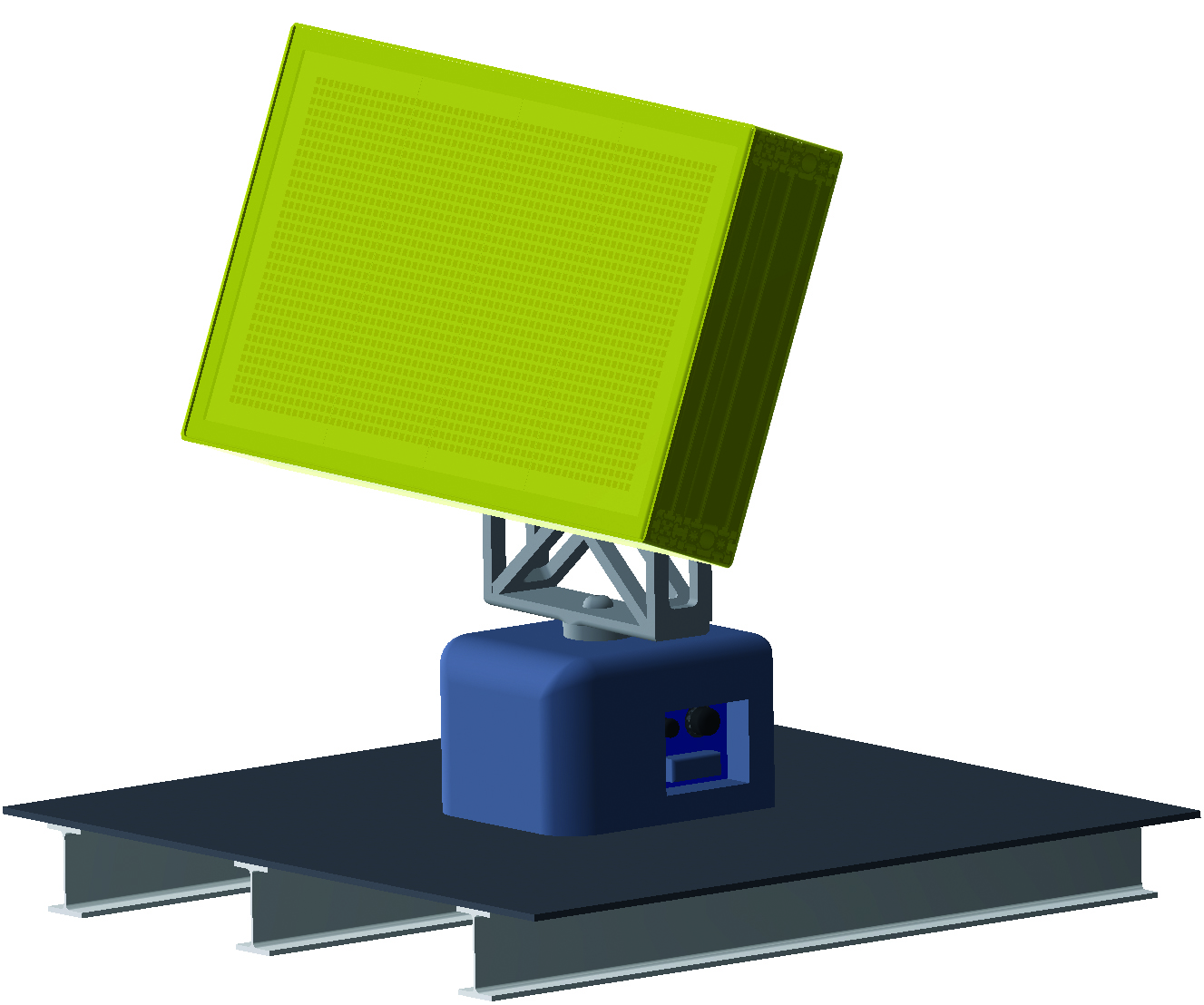Short-range weather radars for optimized forecasting
Currently, weather forecasts are mostly based on long-range radars. However, long-range weather sensing brings intrinsic limitations: Due to the curvature of the Earth, about 70% of the troposphere below one kilometer cannot be observed, and the temporal and spatial resolutions are also quite coarse. Conversely, short-range weather radars in development at Fraunhofer FHR can potentially sense the lower troposphere and dramatically improve spatial and temporal resolutions.
Rain, hail, storms, sunshine: The weather is part of our lives. Although the forecasts in Germany are generally good, there are often heavy rain events, flash floods or storms that hit entire regions completely unprepared. In addition, many countries in the World cannot afford reliable and localized weather forecasting.
Weather monitoring is usually based on mechanically rotating long-range weather radars covering a range of about 250 kilometers. The emitted radar beams directed at lower altitudes bend only moderately towards the Earth's surface. Therefore, a widening gap to the surface quickly develops as the distance from the sensor increases. For this reason, nowadays, about 70 percent of the troposphere below one kilometer cannot be observed by radar means. Moreover, long-range radars demand for high ownership costs, around several millions Euro, and require about five minutes to complete a volumetric sampling of the hemisphere, a time interval often too coarse to timely capture important weather events.
Better temporal and spatial resolution
A network of micro-radars could overcome these disadvantages and improve the accuracy of weather forecasts. At the comparatively shorter range of 50 kilometers, the curvature of the Earth plays a negligible role, finally allowing full sensing of the lower troposphere. Moreover, electronic beam steering in elevation enables much faster sounding of the hemisphere. Indeed, a volumetric scan by electronic means only takes one minute, thereby improving the temporal resolution respect to long-range radars by a factor five. Fraunhofer FHR is being developing such technology demonstrator within a weather radar initiative aiming at advancing radar meteorology in Central Europe. To this end, a Memorandum of Understanding has been signed and finalized with the Earth Sciences Institute of the Rheinische Friedrich-Wilhelms University in Bonn and the Delft University of Technology in the Netherlands.
A flat-panel micro weather radar is prospected to be installed on the roof of Fraunhofer FHR and deliver initial results by the end of 2025. Plans for industrialization of the prototype together with the German and European industry are under evaluation. To this respect, one key condition is well kept on the foreground: The system should be commercialized at a comparatively inexpensive price point around 100 K€, finally opening new possibilities for next-generation short-range weather sensing.
